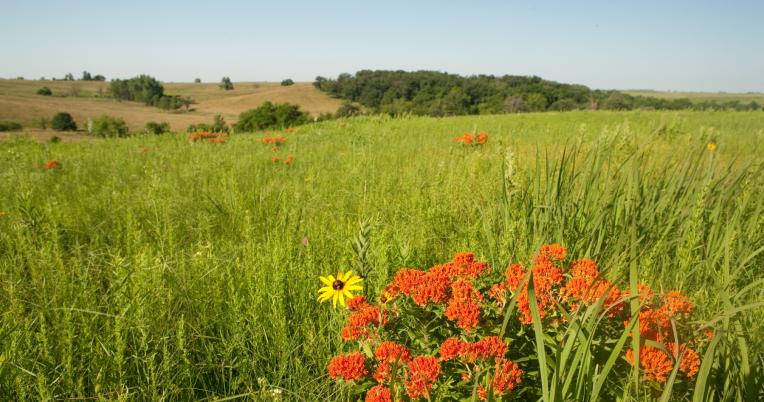Missouri Department of Conservation is exploring the feasibility of using LiDAR to accurately model headcuts, sites of bank instability and riparian corridor condition, as well as document channel width within Priority Geographies. The goal of the project is to create a toolset for GIS users with limited experience. Leaf-off and leaf-on LiDAR was flown at USGS QL 0.5 for the Missouri portion of the Grand River Grasslands, achieving a horizontal accuracy of 6 inches and a vertical accuracy of 3 inches.
Using eCognition, image objects were generated from the 2015 USGS leaf-off (4-band) DOQQ, and land cover (LC) classes were assigned by hand to the resulting 167,000+ objects. A center line stream layer was derived from a hydrologically sound .5 m DEM using a conditional flow accumulation statement that proved to be more accurate than the available 24k NHD.
To accurately measure a 30m riparian corridor, it was necessary to define the stream channel. A custom program created bankfull channel polygons for second order and larger streams. This custom program also enabled the generation of potential headcut locations. Once channel polygons were defined, a tool was developed to calculate the percentage of shaded stream surface.
In combination with existing data, this toolset will assist land managers in determining where to implement Best Management Practices along stream corridors by allowing them to effectively evaluate stream stability and riparian corridor condition. This project has been completed and can be downloaded from GitHub at the link below.

